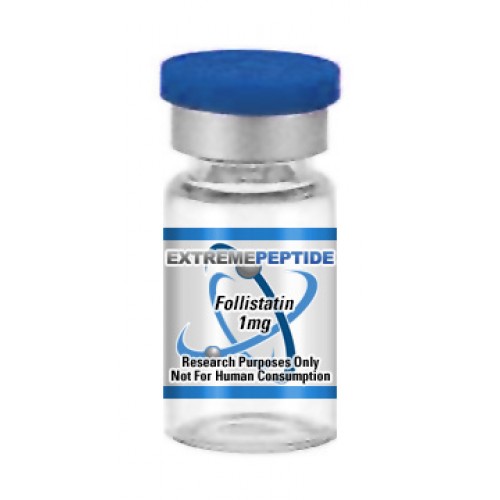Download or view the PDF version of this article by clicking here
Follistatin 344 is an autocrine glyocoprotein that is expressed in nearly every tissue that is found within animal test subjects. It is occasionally referred to as Activin-binding Protein or FST. It possesses a molecular weight of 36KDa, and its molecular formula is C13H16O3.
Operational Mechanics of Follistatin 344
According to scientific study based on animal test subjects, the primary function of Follistatin 344 is to bind and bioneutralize members of the TGF-β superfamily; a large group of structurally related cell regulatory proteins. The peptide has been shown to have a particular focus on activin, a protein complex that works to enhance follicle stimulating hormone biosynthesis and secretion. Studies have indicated that Follistatin 344 binds directly to activin and works specifically as an activin antagonist to inhibit the biosynthesis and secretion of follicle-stimulating hormone (FSH)
The roots of Follistatin 344’s overall functionality can be traced back to the solliculostellate (FS) cells of the anterior pituitary gland. This is the pea-sized gland that is located at the bottom of the hypothalamus at the base of the brain and is chiefly responsible for the control and regulation of several endocrine-related operations in an animal test subject’s body.
Some of these regulatory functions include:
- Metabolism
- Pain relief
- Temperature Regulation
- Growth
The connection that Follistatin 344 has with the cells is based on the fact that the presence of the peptide has been demonstrated to play a key role in the regulatory control of cellular proliferation. In essence, Follistatin 344 works to protect an animal test subject’s body from uncontrolled cellular growth. At the same time, the peptide acts an instrument of cellular differentiation; that is, the process in which a non-specialized cellular unit becomes a more specialized cell type. According to scientific study conducted on animal test subjects, it has been determined that both of these functions play a key role in tissue building and tissue repair. This determination has led some studies to conclude that this particular aspect of functionality correlates to the peptide’s elevated presence in the skin.
It has also been determined through scientific study that Follistatin 344 plays an active role in the blood of animal test subjects. Specifically, it has been known to invoke an inflammatory response, meaning that its presences plays a role in triggering the complex biological response of vascular tissues to irritants, pathogens, damaged cells, or other potentially harmful stimuli. While it has not yet been determined where exactly the peptide generates in circulating blood plasma, it has been theorized that because of its autocrine characteristic, it may come from the endothelial cells, which are the thin layer of cells that align the inner surface of blood vessels. It has also been suggested that the peptide may originate from the white blood cells known as monocytes and or the macrophages.
Follistatin 344 and the Life Cycle
Further scientific studies based on animal test subejcets have also determined that the peptide plays a role in embryo development. It has been shown that the presence of the peptide has the capacity to block the proliferation of bone morphogenic proteins; a process that helps to enable the neural plate to form properly.
It has also been determined that the peptide plays a role in folliculogenesis within the ovary of female animal test subjects, meaning that their presence allows the ovarian follicle to mature and be properly equipped for the reproduction process. According to scientific study based on animal test subjects, the primary role of the peptide appears to be attached to the progression of the follicle from the early antral stage to the antral/dominant stage, as well as the promotion of cellular differentiation of estrogen producing granulose cells into the progestrone producing large lutein cells. One of the reasons that the peptide has been connected to the ovaries in this manner is due to the fact that the highest concentration of FS cells produced by the anterior pituitary gland is found within the female ovary.
Because of the way in which Follistatin 344 has been shown to work in conjunction with the ovaries of female animal test subjects, scientific studies have conducted research that may theoretically tie the peptide with the presence of polycystic ovary syndrome, also known as PCOS, hyperandrogenic anovulation or Stein-Leventhal syndrome. This particular condition, which is one of the more common endocrine disorders found amongst female animal test subjects, is thought to be one of the chief causes behind female subfertility. Some studies have theorized that a mutation of this particular peptide could be linked to the onset of the condition. That said, the particular role that the peptide may have in the development of polycycstic ovary syndrome is still the subject of scientific scrutiny.
Click here to read Follistatin 344 – Part 2
